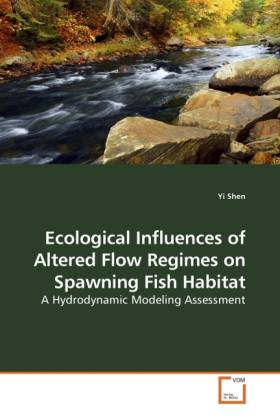
Bedankt voor het vertrouwen het afgelopen jaar! Om jou te bedanken bieden we GRATIS verzending (in België) aan op alles gedurende de hele maand januari.
- Afhalen na 1 uur in een winkel met voorraad
- Gratis thuislevering in België vanaf € 30
- Ruim aanbod met 7 miljoen producten
Bedankt voor het vertrouwen het afgelopen jaar! Om jou te bedanken bieden we GRATIS verzending (in België) aan op alles gedurende de hele maand januari.
- Afhalen na 1 uur in een winkel met voorraad
- Gratis thuislevering in België vanaf € 30
- Ruim aanbod met 7 miljoen producten
Zoeken
Ecological Influences of Altered Flow Regimes on Spawning Fish Habitat
A Hydrodynamic Modeling Assessment
Yi Shen
Paperback | Engels
€ 71,95
+ 143 punten
Omschrijving
Reservoir releases for generating power need to be reconciled to maintain healthy ecosystems in regulated rivers. Fluctuating, complex flow patterns near river obstructions such as boulders provide unique habitat for many aquatic organisms. In this book, the ability of two- and three- dimensional hydraulic models to reproduce the localized complex flow features at both steady and unsteady flows is examined. The performance of the hydraulic models is evaluated by comparing the numerical results with measurements of flow around boulders located at a reach of the Smith River in Virginia, U.S.A. Further, time-dependent flow features affecting channel morphology and aquatic physical habitat are investigated. Issues related to the adoption of either a truly dynamic modeling approach or a quasi-steady methodology for simulating unsteady flows are examined through a proposed unsteadiness flow parameter. The insights obtained from this study can assist in properly accounting for the impact of hydropeaking operations on fish habitat and instream flow management.
Specificaties
Betrokkenen
- Auteur(s):
- Uitgeverij:
Inhoud
- Aantal bladzijden:
- 116
- Taal:
- Engels
Eigenschappen
- Productcode (EAN):
- 9783639251289
- Verschijningsdatum:
- 16/04/2010
- Uitvoering:
- Paperback
- Formaat:
- Trade paperback (VS)
- Afmetingen:
- 152 mm x 229 mm
- Gewicht:
- 181 g

Alleen bij Standaard Boekhandel
+ 143 punten op je klantenkaart van Standaard Boekhandel
Beoordelingen
We publiceren alleen reviews die voldoen aan de voorwaarden voor reviews. Bekijk onze voorwaarden voor reviews.









